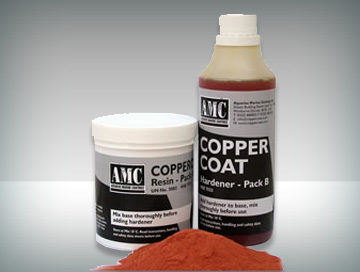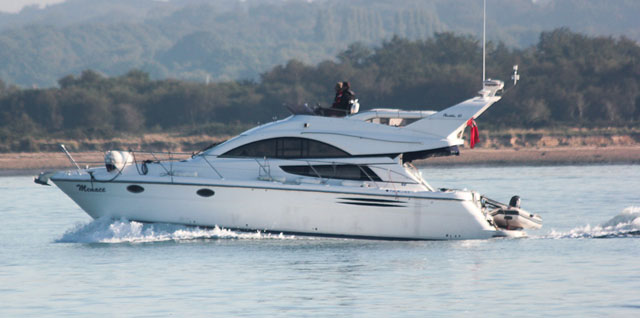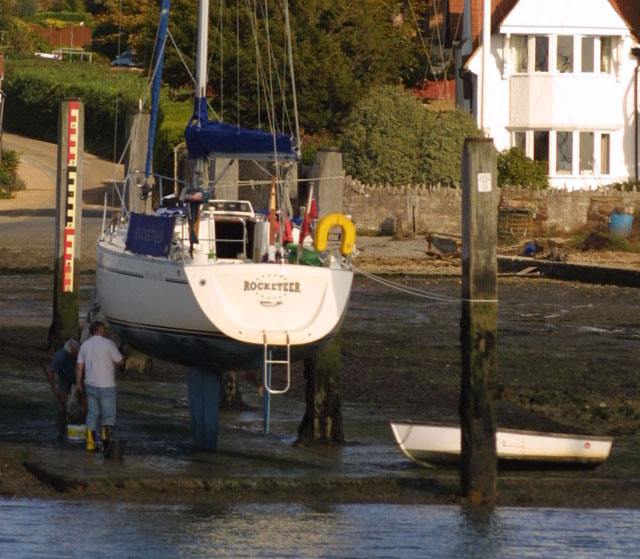How to choose antifouling paint
Antifouling is essential to prevent growth of weed and marine organisms on the bottom of any boat that is kept afloat. But, with so many options on the market, how do you choose the right antifouling paint for your vessel?
Antifouling is an essential part of keeping your boat as healthy and efficient as possible. But when it comes to choosing the right antifouling, new restrictions and the mass of options on the shelves can feel baffling!
There are many tasks that have become easier and more cost effective over time thanks to improvements in technology. However, that’s not true of antifouling paints. Even though most manufacturers are investing research in improved formulations, the problem is that the ultimate protection for the bottom of your boat is incompatible with the health of the marine environment as a whole. Put simply, keeping too many boats in one location over a long period of time means that high-strength antifouling products not only keep the bottom of a boat clean but also become responsible for slowly wiping out the marine life in a wider area.

From the slightest slime to full growth and barnacles, every bit of growth will slow your boat down. | Image by PS Copywriting
Jump to section:
- Understanding marine fouling
- Types of antifouling
- Hard antifouling
- Eroding antifoulings
- Freshwater antifouling
- Antifouling for metal boats and outdrives
- Antifouling restrictions
- Frequency of antifouling application
- A long-term antifouling solution?
- Five boats, five antifouling solutions
- 1. 33ft sailing cruiser
- 2. 36ft racing yacht
- 3. 42ft long-distance cruiser
- 4. 40FT Planing motor yacht with 23-knot cruising speed
- 5. 25ft RIB or sports cruiser
UNDERSTANDING MARINE FOULING
Marine fouling develops from plankton, which is often particularly concentrated in estuaries, where sewage disposal and fertiliser run-off provide rich sources of nutrients. Fouling on the immersed sections of the hull and around the waterline may be either animal or plant-based. For instance, the soft-branching organisms that grow in dark areas under the hull are usually assumed to be weeds, but their polyps have minute tentacles that capture prey.
All very interesting, but for the boat owner, a foul hull means a slow boat and reduced fuel efficiency, regardless of whether the fouling is from prey or predator. It’s a battle boaters have been fighting for years, and there is an array of products on the market to help with this very problem.
TYPES OF ANTIFOULING
Regular antifouling paints contain water-soluble biocides that are slowly released to reduce the rate of growth of marine life. Antifouling paints containing biocides are classed as biocidal products and are regulated like pesticides, with an ongoing trend of increasingly strict regulation. Key issues when evaluating the safety of antifoulings include effects on non-target organisms, build-up in the food chain, and safety during application.

Regular antifouling paints, like this one from Hempel, contain water-soluble biocides. | Image: marinescene.co.uk
Modern antifoulings are copper-based, with copper oxide (CuO2) being the most important biocide by far. This is more soluble in water than plain copper and copes well with animal fouling. Some products also use copper thiocyanate (CuSCN), which enables brighter colours to be created but is less effective against animal fouling if used alone.
In addition, some products use organic biocides to keep slime at bay, which copper oxide is not very good at preventing. Once slime starts to form, it harbours other organisms that can get a hold on the hull. Perfecting the exact formula of organic biocides used can make a marked difference in performance, with manufacturers typically exerting a considerable amount of effort in this respect.

Do you need a hard antifouling or an eroding one? It will depend on your boat usage. | Image by: Wirestock
HARD ANTIFOULING
Hard antifouling paint uses biocides that dissolve very slowly in water, meaning they gradually dissolve as the season progresses. The biocide particles are suspended in paint, which dries to a hard finish to enable periodic scrubbing to keep the hull in perfect condition during the season.
This type is ideal for racing yachts that are kept afloat and for fast powerboats. For the latter category especially, attempting to skimp on antifouling is nearly always a false economy: even a small amount of growth results in significantly increased drag and, therefore, a double whammy of impaired performance combined with much higher fuel bills.
ERODING ANTIFOULINGS
Eroding antifouling uses a paint that is very slightly soluble in water, so microscopic fragments of it are constantly falling away to expose fresh biocide. This has the advantage that the build-up of layers of antifoul is reduced and tends to be cheaper than hard antifoulings, but the drawback is that it cannot be scrubbed. Eroding types of antifouling are most suitable for cruising yachts and displacement motorboats.

Boats kept in freshwater need to be protected against different organisms than those sailing in saltwater.
FRESHWATER ANTIFOULING
Boats kept in freshwater need protection against different species of fouling compared to those moored in a saltwater environment. At first sight, this can present a dilemma for those who move their vessels from inland waterways to the sea and back again. However, there's a simple solution: use the product for the area the vessel will be in most of the time. If you move a boat from the sea to inland waterways, for instance, it will take several weeks for freshwater species to start becoming established, and during this time, any existing growth from the saltwater environment is likely to die.
ANTIFOULING FOR METAL BOATS AND OUTDRIVES
The high copper content of antifouling can create problems with underwater metal surfaces, especially with aluminium vessels and outdrives, so it's important to choose a product that's suitable for these applications, and to select compatible primers.
ANTIFOULING RESTRICTIONS
It's worth noting that some countries, even within the EU, have their own specific regulations, and antifoul bought in one territory may not be legally applied or used in another, especially in environments that are considered to be sensitive. It's therefore important to be sure the product you intend to apply is legal both in your home country and any you intend to visit.
As of the 10th May 2024, the UK set out new restrictions on the types of antifouling that can be used on any UK-flagged ship, regardless of where it sails, and any ships coming into UK waters. Many of these restrictions already apply in the EU and aim to reduce the harmful effect on marine life that is caused by particularly toxic antifouling ingredients.
The full list of restrictions can be found in the Merchant Shipping (Anti-Fouling Systems) Regulations 2024, which, amongst other things, restricts the use of antifouling containing organotin and cybutryne.

Table showing antifouling restrictions | Image by gov.uk
FREQUENCY OF ANTIFOULING APPLICATION
How often antifouling needs to be re-applied depends on a variety of factors. These include the type of vessel, the purposes for which it's used, local fouling conditions, and the length of time the boat will remain afloat. Many race boats are dry-sailed (moored ashore and launched only when sailing) for good reason - it's almost the only practical way to ensure a perfectly clean bottom throughout the year. With the increasing number of dry stack facilities available, this is also a viable option for many daysailers and powerboats up to around 9 metres in length.
However, this is not a practical solution for all boat owners. Most competitive racing fleets that stay afloat throughout the season organise a fortnightly scrubbing programme to ensure they remain free of all growth, even though they use the best antifouling available.
Although other boat owners may not need to be as fastidious in their approach, this gives a measure of the scale of the problem they face. Traditionally, cruising yachts have applied a couple of coats before being launched in the spring. This is often sufficient to last until autumn, although those in areas of high fouling may start to see slime forming after only a few weeks afloat. Conversely, in areas with little fouling, a single coat may be fine for a boat that is in commission for three or four months.

Antifouling corrodes over time, so it’s important to reapply regularly to keep your vessel in the best possible condition. | Image by PS Copywriting
A LONG-TERM ANTIFOULING SOLUTION?
A different approach is taken with long-lasting products formed of epoxy resin mixed with a large amount of ultra-fine copper powder or copper-nickel alloy. Although initially considerably more expensive than conventional antifoulings, copper coating, rather than using antifouling paint, has the potential to give protection for 10 years or more, although slime may need to be scrubbed off periodically. This process also exposes a fresh layer of copper on the surface.

Boat dried out, after scrubbing a hard antifouling mid-season.
FIVE BOATS, FIVE ANTIFOULING SOLUTIONS
Below is an outline of what antifouling paint you might want to choose for different types of boats and patterns of use. It’s important to recognise that the optimum type changes not just for different styles of vessel but also how often the boat is used and the purpose for which it’s used.
1. 33FT SAILING CRUISER
Boat used: minimum three weekends a month, May to September
This boat is one of the easier ones to protect, so a mid-priced eroding product such as Hempel Cruising Performer will have a reasonable chance of doing the job with acceptable efficiency. There are a number of reasons for this: firstly, if slime forms towards the end of the season, then on a cruising sailboat, it’s critical to neither performance nor fuel economy. Secondly, the fact that the boat is used regularly will help the eroding antifouling paint to do its job, thereby minimising the build-up of slime in the first place. Thirdly the relatively short (five-month) season means prolonged protection is not required.

Hempel's Cruising Performer is a high-performance and self-polishing antifouling paint designed to provide excellent protection all season. | Image by: Hempleyacht.com
2. 36FT RACING YACHT
Boat use: One or two cross-Channel or similar races per month over a seven-month season.
This is a much tougher scenario, as the boat is used less frequently over a longer season, which gives more time for slime to build up between outings. In addition, any slime that does form will quickly take the edge of the boat’s performance and, while losing 0.2 knots won’t matter much to a cruising yacht, for a racing boat, it can make a half-hour difference on a 100-mile race.
For this type of boat, a quality hard racing antifouling paint such as Nautix A4, Hempel Hard Racing, or Flag Performance Extra will give excellent short-term protection and allow the boat to be lifted to clean the hull before your most important races.

Nautix A4 White antifouling is recommended for sail- or motor-boats cruising at speeds of over 30 knots. | Image by Nautix.com
3. 42FT LONG-DISTANCE CRUISER
Boat use: continuous cruising in warm waters for 10 months per year.
If you’re in a position to clean the bottom of the hull from the water, then a product such as Coppercoat would be worth considering and may eventually repay its high up-front cost several times over. Coppercoat isn’t as good at preventing slime as conventional antifouling paints with a relatively high organic biocide content, particularly for boats that don’t move much. However, if you’re regularly on the move and tend to anchor and swim in the kind of places where it’s easy to give the bottom of the boat a quick wipe periodically, this may be a good choice.
Alternatively, if you’d prefer to stick with more traditional antifouling paint, a high-performance eroding antifoul, such as International Micron 350 or Hempel Mille NCT, will keep marine life at bay for longer than lesser products.

Coppercoat antifouling is great for boats that can easily be cleaned off in the water.
4. 40FT PLANING MOTOR YACHT WITH 23-KNOT CRUISING SPEED
Use: one weekend per month, plus a two-week summer 400-mile cruise
Just as the racing yacht needs to avoid the build-up of slime, the same is true of fast power boats. Even a small amount of growth will increase the amount of power needed to get on the plane, significantly increasing friction and, therefore, fuel consumption at speed.
Most eroding antifouling paints are not recommended for speeds above 17 knots, so this factor is likely to limit you to the hard racing types – as with racing yachts, it’s worth choosing a top-quality product as the relatively modest extra cost will easily be covered by fuel savings. In addition, you’ll want the hull and propellers to be as clean as possible for your summer trip, so schedule a lift-out and pressure wash your vessel as close to the start of this as you can.

The performance and fuel economy of a fast planing powerboat such as this Fairline Phantom 40 is affected by even small amounts of marine growth on the hull.
5. 25FT RIB OR SPORTS CRUISER
Use: Bank holidays and occasional long weekends from Easter to September, plus a handful of day trips during a two-week summer holiday.
For a boat like this, the arguments against even bothering with antifouling get stronger each year. Given that it’s next to impossible to keep the bottom of a boat that’s only occasionally used clean, and this type of boat is very sensitive to any layer of slime, for most owners, it would be better to admit defeat. Instead of keeping the boat afloat, book a slot in a dry stack to keep your vessel free from growth and ready for your next trip!

It may be best to duck the challenge entirely and simply keep this boat out of the water when not in use.
By keeping your boat dry, you won’t need to pay for moorings or for annual antifouling, yet the bottom will always be clean when you want to use the boat. In addition, most dry stack facilities provide some protection from the elements, keeping your boat safe and sound when not in use.
For more information and advice on antifouling paint, see: How to prepare and apply antifouling and Should I invest in new antifouling technology?
Editor's Note: This article was originally published by Rupert Holmes in April 2021, most recently updated by Pippa Shaw in July 2025.














